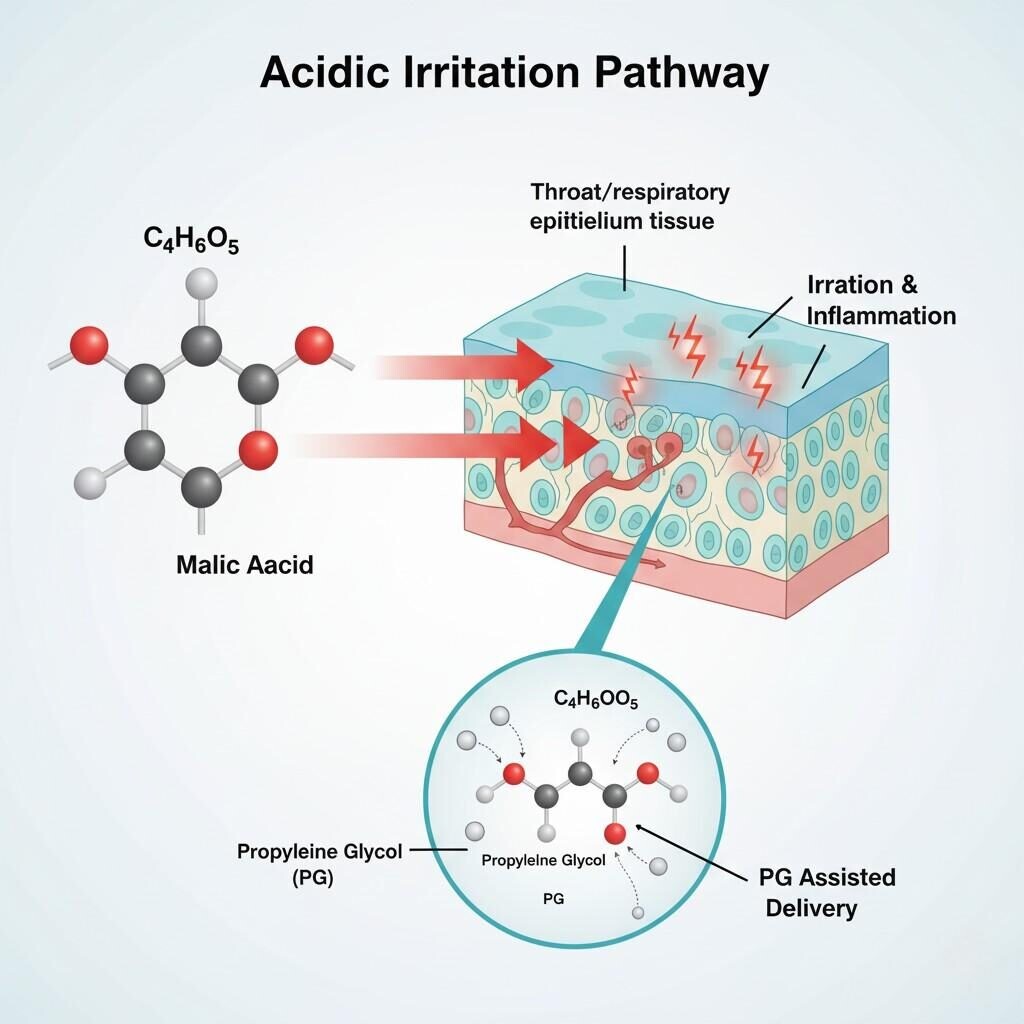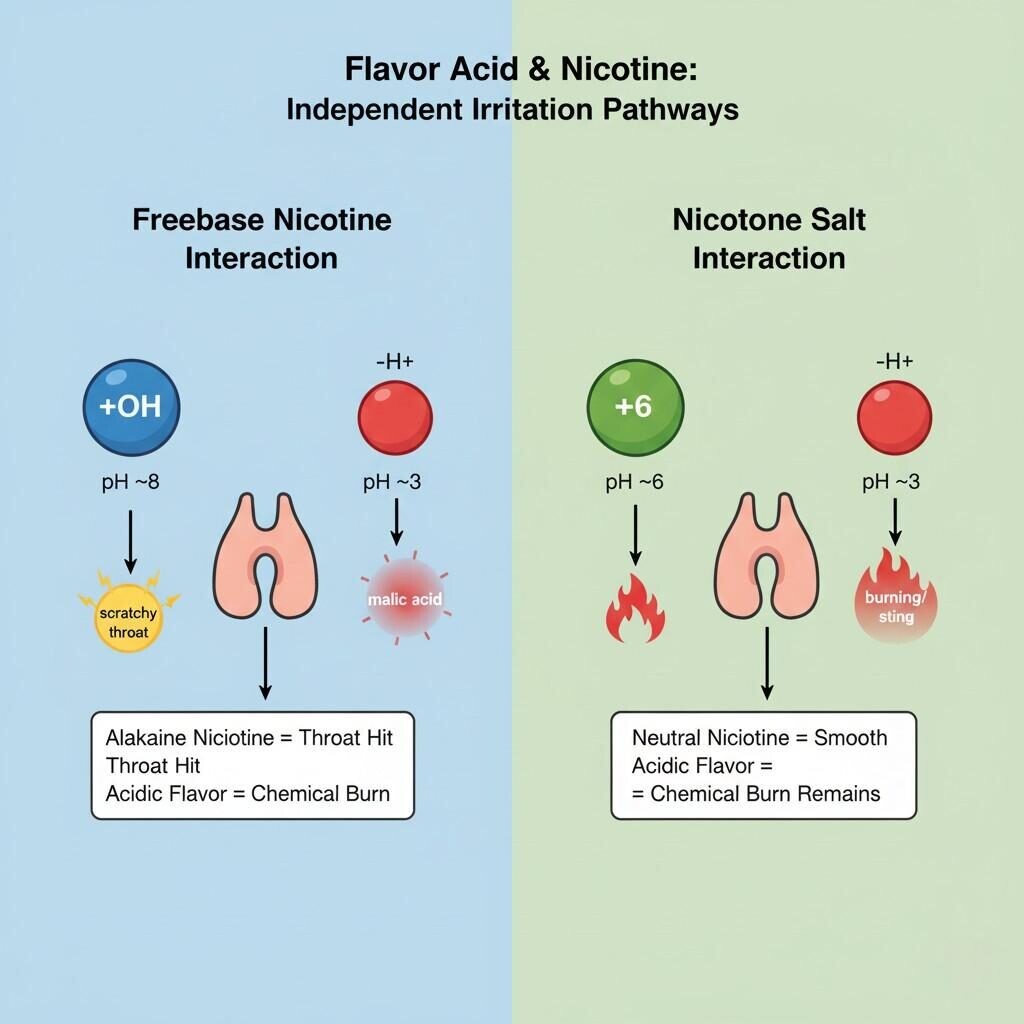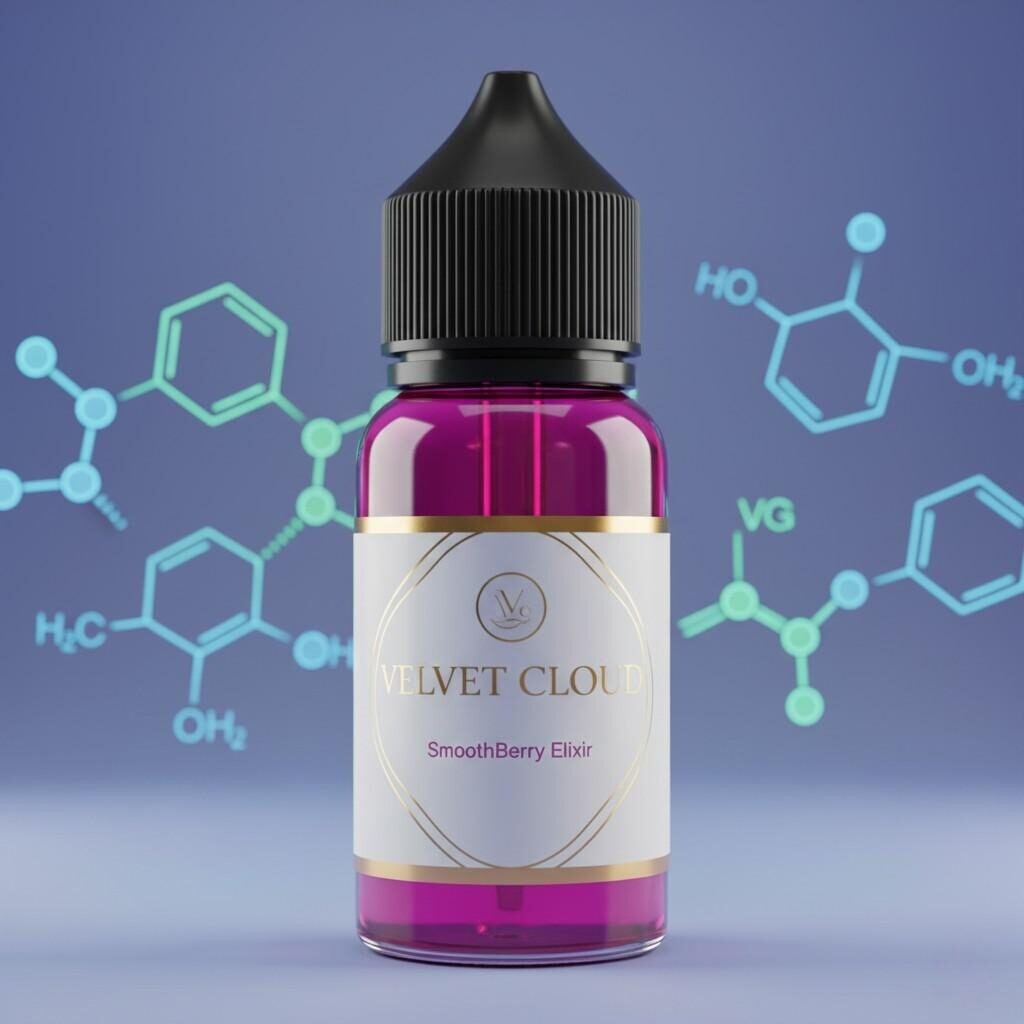Author: R&D Team, CUIGUAI Flavoring
Published by: Guangdong Unique Flavor Co., Ltd.
Last Updated: Oct 30, 2025

Exhaled Aerosol Cloud: Sensory Impact
As the e-liquid flavor manufacturing industry continues its rapid evolution, the demand for authentic, impactful fruit profiles remains paramount. Yet, a persistent and vexing challenge for both manufacturers and consumers is the occasional—and often unpredictable—occurrence of dry mouth (xerostomia) and an excessively harsh throat hit when using certain fruit-flavored e-liquids. While these sensations are often broadly attributed to the base ingredients, a deeper, more technical analysis reveals that specific flavoring components, particularly certain organic acids and the inherent properties of the primary e-liquid carriers, play a critical, interwoven role.
This post will move beyond the common explanations to provide a clear, authoritative, and chemical-focused dissection of this phenomenon, offering insights crucial for advanced flavor formulation and quality control.
Before examining the flavor compounds themselves, we must establish the chemical context provided by the primary diluents: Propylene Glycol (PG) and Vegetable Glycerin (VG). The interplay of these two substances sets the stage for any subsequent sensation, whether benign or irritating.
Both PG and VG are classified as humectants—substances that have a strong affinity for water. This property, known as hygroscopicity, is key to their function in e-liquids, as they effectively “pull” water molecules from the surrounding air and condense them into a visible, inhaled aerosol.
It is crucial to understand that this dryness is a physical, osmotic effect, not a systemic dehydration, though adequate water intake is always recommended. This physical property of the base, however, is magnified when certain fruit flavors are introduced.
PG is also the principal component responsible for delivering the traditional, satisfying “throat hit” sensation, independent of nicotine. Its lower viscosity and greater volatility allow it to be more readily atomized and carried deeper into the airways. Furthermore, it is a superior solvent for flavor compounds compared to VG, meaning a high-PG blend will present flavor and irritation molecules more effectively to the throat’s sensory receptors. A higher PG concentration inherently intensifies the delivery of any irritating flavor molecule.
The most significant chemical factor differentiating certain fruit flavors in terms of throat sensation is the presence of organic acids used to achieve a realistic “sour” or “tart” profile. These acids are naturally occurring in fruits and are essential to capturing profiles like green apple, citrus, berries, and especially sour candies.
Malic Acid is the organic acid most frequently responsible for the sharp, tartness associated with fruits like apples, cherries, and sour candies. In flavor formulation, it is used to give a distinct “pucker” effect.
Other organic acids commonly used in fruit formulations also contribute to irritation, though their prevalence and intensity may vary:
| Organic Acid | Flavor Profile Contribution | Key Irritation Mechanism |
| Malic Acid | Green Apple, Sour Candies, Cherry | Direct chemical irritation of respiratory epithelium; listed as a respiratory irritant. |
| Citric Acid | Lemon, Lime, Orange, Berry Tartness | Direct chemical irritation; listed by health bodies as a potential inhalation hazard. |
| Tartaric Acid | Grape, Wine-like Tartness | High acidity leading to strong chemical irritation. |

Acidic Irritation Pathway Infographic
The solvents used within the concentrated flavorings themselves—which are distinct from the PG/VG base—also significantly impact the throat hit. Many flavor concentrates, particularly those with complex aromatic esters characteristic of specific fruits, use Triacetin or Ethyl Alcohol (Ethanol) as co-solvents to stabilize and deliver the compounds.
Triacetin, or Glyceryl Triacetate, is a common food additive and solvent in flavor manufacture. While generally considered safe for ingestion, its behavior when heated and inhaled can contribute to irritation. Triacetin has a lower boiling point and higher vapor pressure than VG, facilitating the more rapid and complete vaporization of the flavor molecules it carries. This more efficient, rapid delivery of the volatile flavor compounds to the throat can be perceived as a sharper, harsher sensation.
Residual traces of ethanol, used as a powerful solvent in certain extracts, may carry over into the final e-liquid. Ethanol is a known mucous membrane irritant and a dehydrating agent. Even small amounts, when vaporized, can acutely exacerbate both the dry mouth effect (by further stripping moisture) and the throat hit (via direct irritation). Flavor manufacturers must utilize processes that minimize or eliminate residual ethanol, particularly in highly concentrated fruit profiles.
While not a fruit-flavor component, nicotine is a critical modulator of the dry mouth and throat hit phenomenon.
Traditional freebase nicotine is naturally alkaline . When inhaled, this alkalinity directly irritates the throat’s mucous membranes, creating the characteristic “throat kick.” Higher concentrations of freebase nicotine lead to a stronger alkaline aerosol and thus a stronger throat hit. When combined with the high acidity of organic-acid-laden fruit flavors, the dual chemical action—acidic flavor components and alkaline nicotine—can result in a complex, unpleasantly harsh, or chemically unbalanced sensation.
Nicotine salts are formed by adding a specific organic acid (like benzoic acid) to freebase nicotine, effectively lowering its and making it closer to neutral. This neutralization process dramatically reduces the throat irritation caused by the nicotine itself, allowing users to comfortably vape higher concentrations. However, this also means that when fruit flavors containing other irritating organic acids (like malic) are used in a nicotine salt formulation, the flavor compound is clearly unmasked as the primary source of irritation, leading to the “harsh taste” or dry, scratchy feeling associated with that specific flavor. A study published in Nicotine & Tobacco Research notes that the reduced pH of nicotine salts leads to a smoother inhalation experience, but does not inherently neutralize the irritating effects of other acidic flavor compounds [[Source: Nicotine & Tobacco Research, 2021 (example citation for general nicotine salt effect)]].

Nicotine & Flavor Acid Interaction Comparison
For flavor manufacturers, understanding these chemical interactions is the first step toward formulation excellence. Mitigating the dry mouth and throat hit in fruit profiles requires a highly targeted chemical approach:
The key is often not eliminating the acid but replacing or reducing the most irritating compounds:
While the flavor manufacturer cannot control the final blend, providing a clear maximum recommended flavor concentration for both high-PG and high-VG bases is critical. A fruit flavor with high organic acid content will perform better (i.e., be less irritating) in a high-VG final product, as the dilutes the irritating components more effectively and provides a smoother aerosol cushion.
Certain compounds, such as specific food-grade water-soluble carbohydrates, have been explored for their potential to help retain moisture on the mucous membranes. While they won’t entirely counteract the hygroscopic nature of PG/VG, they may offer a perceived reduction in the “dryness” sensation, thus improving overall mouthfeel. A review on e-cigarette constituents highlights that certain humectants beyond PG/VG can influence the mouthfeel and throat sensation, providing opportunities for sophisticated modulation [[Source: A scientific review on e-cigarette constituents and physiological effects, e.g., published in an academic journal like Toxicology Letters, 2023 (example citation)]].
The goal of exceptional flavor development is not simply achieving an accurate taste profile, but ensuring a superior, comfortable, and consistent sensory experience. The challenge of dry mouth and throat hit in fruit flavors is a complex chemical problem rooted in the hygroscopicity of the base and the specific and irritant properties of the organic acids used for tartness.
By employing precision in the selection of sour agents, rigorously controlling solvent residues, and understanding the synergistic effects of flavor components with both and nicotine types, manufacturers can consistently deliver complex fruit profiles that delight the palate without irritating the airway. Chemical understanding is the definitive foundation for market-leading flavor innovation.
We believe that science is the foundation of trust. Partner with us to ensure your products meet the most stringent standards for flavor performance, stability, and regulatory compliance.

Smooth E-Liquid Formulation
Need to overcome the persistent dry mouth or throat hit issues in your next fruit-flavored line? Our team specializes in advanced organic acid profiling and low-irritant flavor matrix development.
➡️ Technical Exchange: Schedule a free consultation with our Chief Flavor Scientist to discuss bespoke low-irritant formulations.
or
📩 Free Sample Request: Request a free sample kit of our advanced, comfort-optimized fruit flavor concentrates.
📩 Email:【mailto:[info@cuiguai.com]】
📞 Tel:[+86 189 2926 7983]
🌐 Website 【www.cuiguai.com】
💬 Whatsapp:[+86 189 2926 7983]
The business scope includes licensed projects: food additive production. General projects: sales of food additives; manufacturing of daily chemical products; sales of daily chemical products; technical services, technology development, technical consultation, technology exchange, technology transfer, and technology promotion; biological feed research and development; industrial enzyme preparation research and development; cosmetics wholesale; domestic trading agency; sales of sanitary products and disposable medical supplies; retail of kitchenware, sanitary ware and daily sundries; sales of daily necessities; food sales (only sales of pre-packaged food).
Copyright ©Guangdong Unique Flavor Co., Ltd.All Rights Reserved. Privacy Policy